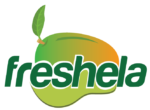
After avocados land in Namibia, the trade happens in both formal and informal markets. Majority of them are sold by formal traders such as supermarkets, wholesalers and some retailers. Avocados are sold in small quantities by informal traders like street vendors and green groceries. The other marketing channel is through the National Fresh Produce Business Hubs (NFPBH) in Ongwediva and Rundu towns run by Agro-Marketing and Trade Agency (AMTA)
Avocado consumers in Namibia prefer buying from supermarkets as they are more convenient and offer cheaper prices. This can be seen in the rapid increase of the number of supermarkets in recent years. These supermarkets also give the option of bulk buying of avocados at discounted prices.
Imports of avocado in Namibia were valued at nearly 1.2 million US Dollars in the year 2023. Even though it’s a slight drop from the previous year, it is the other record high value since 2018. The sharpest climb was from 2016 to 2017 when the import value rose from about 700,000 US Dollars to around 1 million US Dollars.
Here are the total values in import of avocados in Namibia between 2011 and 2023.

Namibia imported avocados from South Africa worth 1.17 million US Dollars in 2023, accounting for 99% of the total imports. In the same year, other minor suppliers were Botswana and Zimbabwe. The average import price in 2023 was about 1.56 US Dollars per kilo.
Avocado Price per kg in Namibia
The average price of a kilo of avocados in Namibia, when they are in abundant supply, is between 20 Namibian dollars and 25 Namibian dollars. Retail prices of one avocado vary from one retailer to another. One avocado costs 5.50 Namibian dollars in one of the supermarkets while some retailers are selling it between 10 and 13.50 Namibian dollars. When there is limited supply, the average price can range between 30 Namibian dollars and 40 Namibian dollars per kg.
Seeing that the avocado is a seasonal fruit, its prices are determined by supply. Namibia imports huge quantities of avocado in March up to September when they are in season. It brings in very small amounts of avocado from October to February because they are out of season in most of the avocado producing countries in Africa.
Avocado in Namibia
Namibia is gradually becoming a high-value avocado market. The country takes in commercial varieties such as Hass and Fuerte. But it also brings in non-commercial green skin varieties like Pinkerton. Many avocado consumers in Namibia prefer green skin types of avocado because of their lower price and large size.
The type, quality and size of avocado determines its price. Even though the dark skin Hass avocado costs more, it is slowly increasing its market share especially among the rising urban population. Consumers who live in and near urban areas of Namibia have a higher disposable income than those living in rural areas. Avocados imported in Namibia are packed in both 4kg and 10kg cartons.
Kenya can compete favorably with South Africa in supplying avocado to Namibia because it has a longer season that lasts from February to October. Another reason is that the sub-tropical climate covering most of Kenya ensures consistent production year after year. Avocado production in South Africa is more irregular as the sub-tropical climate only covers the north east part.
Avocado importers in Namibia make good profits selling to formal markets like supermarkets and wholesalers. The profit margins go lower when informal traders like fruit vendors get in on the avocado business. Informal traders only sell avocados when there is a glut in the market.

